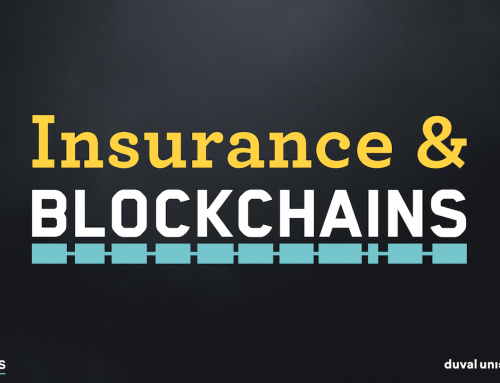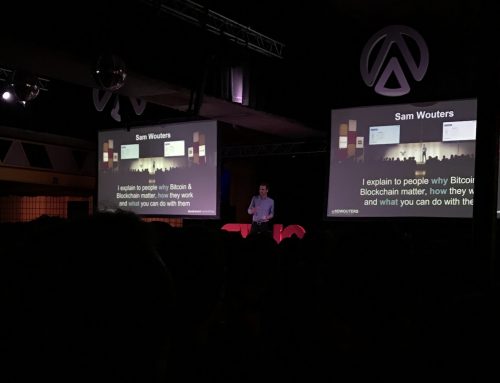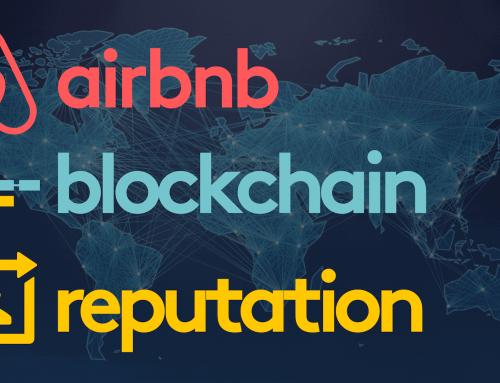As a global “bookkeeping” system, the blockchain is widely praised as one of the most promising technologies of our time. It was invented in 2008 as the underlying technology of the Bitcoin network and is one of several components that makes Bitcoin work.
The blockchain is very complex and most people struggle to understand it. That’s no surprise, as it’s similar to trying to understand how the Internet technically works. Most people still don’t understand the Internet today and yet we use it all the time. Hopefully, the blockchain will also get to that point one day.
Regardless, you came here because you still want to learn about it, so I’ll try to make it as simple as possible for you in this post. Alternatively, you can check my slides at the bottom of the page.
Important note: This post is about open blockchains like the Bitcoin blockchain. Private blockchains are currently undetermined and have only a fraction of the potential of an open blockchain. Most of the things you will read about here do not apply to any private/closed blockchain.
Why does the blockchain exist?
The blockchain was invented so you can transfer ownership of something (like money) without using a middleman that takes a fee and/or time (like banks, credit cards, PayPal, Western Union).
It may sound too good to be true, but it isn’t. Technology is constantly improving and automating the things we do in our daily lives, but the financial system has had next to no innovation for decades now, despite being an incredibly profitable sector.
It is 2017 and we still cannot send money around the world as easy, fast and cheap as sending a message. International transfers take at least a day and/or a 3-20% fee. On top of that, 40% of the adults worldwide don’t even have access to a bank to begin with. The 60% that does, has no idea what is really going on with our money and behind the scenes.
For the digital generation that lives increasingly internationally and online, this is no longer acceptable. An open blockchain is the next logical evolution for the way we exchange money and value around the world. It is going to solve many problems and save us all a lot of money.
How does the blockchain work?
The blockchain is a database that records who owns what, and when. Anyone around the world can own a copy of it. By spreading it out across the world we create a network and prevent it from going offline or getting hacked, just like the Internet. As a result, the Bitcoin blockchain has never gone down and has never been hacked in over 8 years.
As people send each other transactions that get recorded in the blockchain, the database grows and anyone who has a copy of the blockchain needs to update it with all the new changes. To make this easy, the new transactions are grouped together in blocks. In the Bitcoin blockchain, there is a new block of transactions about every 10 minutes for example. This gives everyone in the network enough time to catch up with each other until the next block of transactions is created.
As you can imagine, constantly synchronising all this data around the world is not very efficient. If you’ve ever used a service like Dropbox to store and share files, you will know how much time it can take to synchronise everything. Now imagine doing that on a global scale, crazy!
The truth is, the blockchain is an inefficient database. If we want the highest possible performance, it makes a lot more sense to all use one central database that doesn’t need to be synchronised across the world 24/7.
Why would anyone use the blockchain?
If the blockchain is inefficient, why would anyone use it? We use it because the inefficiency is a trade-off for an open system that isn’t controlled by a single person. The blockchain has 4 very important characteristics that make it preferable over ‘normal’ databases, despite currently having lower performance.
1. Decentralization
As mentioned before, there are thousands of copies of the blockchain spread out across the world. This is important because nobody should be able to control, hack or take down a global financial system.
Without a central point from which everything is controlled, there is no starting point for people to do these things to the blockchain, which makes it more secure than all the organisations in the world that control their services from one central point.
2. Immutability
Everything recorded on a blockchain protected by a lot of computer power cannot be changed afterwards. The way this works is rather complex, but I’ll try to explain it as simple as possible.
Every block of transactions is linked to the previous block that was created, which is linked to the block before that. Altogether these blocks form a chain (hence the name blockchain), which leads back to the first block ever created.
All the transactions in a block form a collective fingerprint, which is used to link that block to the next one. If you try to change one transaction, the ‘fingerprint’ of the block no longer looks the same, as a small part of it changed.
Now the whole world can see that the ‘fingerprints’ in your version of the blockchain are different from theirs, and thus they will realise you are trying to cheat and ignore you.
When people do try to cheat, they have to beat the rest of the network combined. To do this, they need to rewrite the blockchain from the moment where they changed a transaction and then create a blockchain that contains more computer power than the rest of the network. The rest of the network has immensely much more power though, and thus the attacker can never overtake them. This makes an open blockchain immutable.
It is far more rewarding for people to be honest participants, since everyone’s money is involved, we all want it to work well.
3. Open access
Everyone can make use of an open blockchain without having to sign up or ask for permission first. This means anyone can participate really easily, even if they live in a remote location or don’t have the resources to open a bank account.
Of course this also means criminals can make use of it, but when they do so, they permanently record their crimes in the blockchain. No criminal wants to leave permanent evidence and thus an open blockchain is not a good tool for them. This was backed up by a lot of studies, including one by the UK Government.
Still, they CAN use it, so should it be forbidden then? Criminals also use telephones, cars, the Internet and countless other technologies, should we ban those too?
Technology is always a reflection of society, most people mean well and the benefits an open blockchain brings to all of us outweigh the bad minority.
4. Open innovation
This is the biggest power of an open blockchain. Anyone can innovate on the network, without having to ask for permission and waiting for months first.
Open innovation is the same power that helped the Internet to rapidly grow to millions and later billions of users. The fact that anyone can open a website and create innovative new applications on top of the Internet makes it evolve so rapidly.
Instead of a highly complex and heavily regulated financial system with stagnant innovation, an open blockchain allows anyone to help us improve the way we handle money and value around the world.
I heard “blockchain” can be used for…
Theoretically, a blockchain can be used for many things, but that doesn’t mean all of them make sense. You can use a car to deliver mail in a street, but just because the car is more innovative than a bicycle, it doesn’t make this the best solution.
Up until today, almost everything people claim they can do with a blockchain is theoretical. Take most bold claims you hear with a grain of salt. It’s kind of like reading for the 17th time that “Scientists may be close to finding a cure for X”.
Innovation should definitely be applauded and stimulated, but sensationalism about what a blockchain can theoretically do only confuses people.
If you’re interested in discussing the possibility of a certain use case, please reach out to me.
What is next?
The blockchain is only 8 years old and still needs a lot of development.
As mentioned before, the amount of transactions that can be synchronised over the network is still very limited. Developers around the world are working hard at making this more scalable. Remember that people once also thought the Internet would never scale enough to be useful, yet here we are today.
Another improvement that is being worked on is better privacy. Currently anyone can see all the transactions on blockchains, including within private ones. They are not listed with your name on it, but each unique address can be followed throughout time, even if you don’t know who owns it. Eventually this leads to mass surveillance like we have on the Internet, which is something the network does not want to see happen again.
The blockchain is still a young technology, but it has the potential to fundamentally change the world to create a more transparent, inclusive and innovative financial system. I hope you are excited about the opportunities it brings too.
If you enjoyed the read, please share it with others!
If you’re interested in learning more, I give presentations about Bitcoin and the Blockchain. I’m also working on filling up my site with lots of information to help you better understand them.


